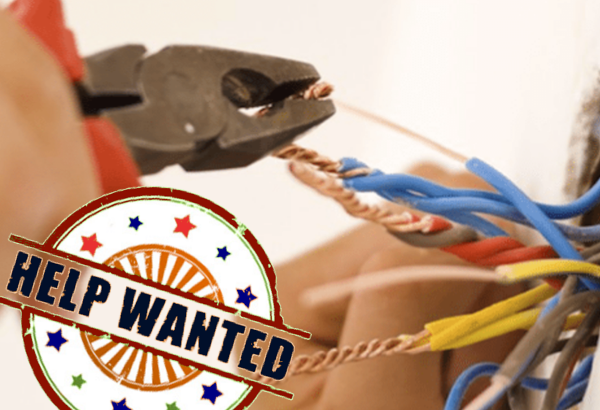
Trapping, aerial gunning methods prove effective in the first few months of the year.
Jefferson City, Missouri - Missouri Department of Conservation (MDC) wildlife biologists on the feral hog strike team have tallied up feral hog numbers for the first three months of 2017. The first quarter yielded a total of 2,332 feral hogs removed by MDC, partner agencies, and private landowners, which is nearly half of the total number of feral hogs removed in all of 2016.
Southeast Missouri removed a total of 1,124 feral hogs in the first quarter, which is where the highest density of feral hogs occurs. The Ozark region removed 706 while the Southwest region removed 359 feral hogs. St. Louis, Central and Kansas City regions all trapped fewer than 100 feral hogs each. Additionally, in one week, more than 250 feral hogs were removed from the southeast Missouri landscape, all through aerial gunning.
“We’ve built significantly on our progress from 2016,” said Alan Leary, MDC’s Wildlife Management Coordinator and leader of MDC’s feral hog elimination efforts. “We continue to engage private landowners and partners in efforts to report hog sightings, continue trapping and deter hog hunting and the illegal release of hogs, and that’s why we’re seeing growing success.”
In 2016, MDC partnered with other conservation groups, agriculture organizations, and the Missouri Conservation Heritage Foundation to provide the state's feral hog strike team with more trapping equipment for use on both private and public land, and to fund public education efforts on the dangers of feral hogs.
“Because most land in Missouri is privately owned, it’s crucial to engage the public and educate them on the dangers of feral hogs and trapping efforts,” Leary said. “Through ongoing communication efforts, both by MDC and partners, more landowners are learning about feral hogs, asking for help and ridding their property of this invasive species. Examples, such as the one in Taney County where 62 feral hogs were captured in one trap, show landowners that it’s much easier to get rid of feral hogs if you trap the whole sounder, rather than allow hunting and only shooting one or two.”
Feral hogs are not wildlife and are a serious threat to fish, forests and wildlife as well as agricultural resources. Economic losses resulting from feral hogs damage in the U.S. is estimated at greater than $1.5 billion per year. Feral hogs damage property, agriculture, and natural resources by their aggressive rooting of soil in addition to their trampling and consumption of crops as part of their daily search for food.
Feral hogs have expanded their range in the U.S. from 17 to 38 states over the past 30 years. Their populations grow rapidly because feral hogs can breed any time of year and produce two litters of one to seven piglets every 12 to 15 months. Feral hogs are also known to carry diseases such as swine brucellosis, pseudorabies, trichinosis and leptospirosis, which are a threat to Missouri agriculture and human health.
To report feral hog sightings or damage, go online to mdc.mo.gov/feralhog.

MDC encourages motorists to give turtles a brake!
Slow down when you see a turtle in the road and try to safely steer around it.
JEFFERSON CITY, Mo. – The Missouri Department of Conservation (MDC) encourages motorists to give turtles crossing roads a brake. Turtles are struck by cars throughout warmer months, but are at special risk this time of year because they are on the move. Young males make up most of the travelers as they search for territories of their own and for females. Females are also crossing roads in search of nesting sites. Comfort is also a factor. Like other reptiles, turtles are cold-blooded so basking on warm asphalt feels good on cool spring days.
MDC encourages motorists to slow down when they see a turtle in the road and check to be sure they can safely steer around it. If helping a turtle cross a road, keep human safety as the number-one concern. Check for traffic and move the turtle across the road in the direction it is traveling.
Three-toed box turtles, ornate box turtles, and common snapping turtles are species often seen crossing roads in Missouri.

U.S. Route 60 in Stoddard County Reduced for Bridge Repairs
Route 60 in Stoddard County will be reduced to one lane as Missouri Department of Transportation crews perform bridge maintenance.
This section of roadway is located between Route 51 and Route TT.
Weather permitting, work will performed Thursday, April 27 from 6 a.m. to 4:30 p.m.
The work zone will be marked with signs. Motorists are urged to use extreme caution while traveling near the area.
For additional information, contact MoDOT’s Customer Service Center toll-free at 1-888-ASK-MODOT (1-888-275-6636) or visit www.modot.org/southeast.


Route 60 in Stoddard County Reduced for Tree Trimming
Westbound Route 60 in Stoddard County will be reduced to one lane as Missouri Department of Transportation crews trim trees along the roadway.
This section of roadway is located from Route F to County Road 449.
Weather permitting, work will take place Monday, April 17 through Thursday, April 27 from 7 a.m. to 4:30 p.m. daily.











